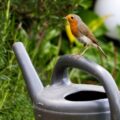As the clocks go back, temperatures drop and days get shorter, many homeowners may feel unsure about how to protect their lawns, plants and outdoor areas from frost and wet weather.
This list of simple steps to help make garden maintenance easy and cost-effective could help make a big difference come spring.
(1) Clear away fallen leaves and debris
Keeping gardens tidy through the winter helps prevent mould and disease.
Regularly sweep away fallen leaves from lawns and pathways to stop them becoming slippery.
Composting leaves can also create a useful natural fertiliser for next year.
(2) Protect plants and flowerbeds
For tender plants that struggle in frost, cover with garden fleece or cloches to keep the cold out.
Mulching flowerbeds with bark, compost, or leaves helps insulate roots and preserve nutrients in the soil.
(3) Look after your lawn
Avoid walking on frosty or waterlogged grass, as this can damage blades and cause bare patches.
Rake away debris and keep the surface aerated using a garden fork to prevent waterlogging.
Where possible, give the lawn one final short trim before frosts begin.
(4) Clean and store garden tools
After the busy growing season, now is the time to give tools a good clean.
Remove soil from blades, lightly oil metal parts, and store in a dry, frost-free place. This prevents rust and ensures tools are ready for use when spring arrives.
(5) Care for wildlife
Winter can be challenging for local wildlife. Adding a small water source that doesn’t freeze, or leaving seed and fat balls out for birds, can provide valuable support during colder spells.
Piles of leaves or logs can also serve as safe shelters for hedgehogs and insects.
Though garden care may feel like a small task, these steps can help maintain outdoor spaces and give homeowners a sense of pride year-round.
(7) Store garden furniture safely in the dry
Outdoor chairs, sofas and cushions will not survive the winter months if not protected securely.
If space allows, allow them to hibernate indoors for the winter to protect against mould and cracks.
If your furniture, barbecue or other summer equipment has to remain outside, look around for suitable, strong covering methods, and look into how they can be weighted down to avoid being blown away.













